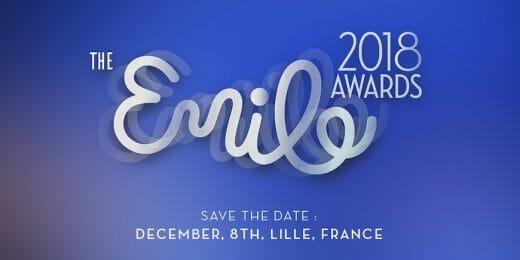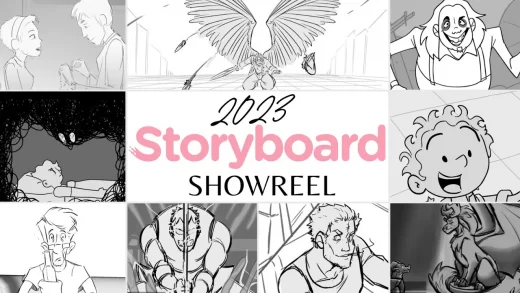Every month we highlight one animated project which has been submitted to the Toon Boom Showcase page. This month’s Showcase Spotlight is a trailer for After12, the podcast accompanying Echelon Design’s 12for12 documentary series.
The trailer for the After12 podcast was brought to life by Gabriel Gómez, a freelance animator and illustrator who uses Toon Boom Harmony in his work. We sat down for an interview with Gabriel on the production process behind this short.
What series of events brought you to make an animated trailer for 12for12’s podcast?
It all started two years ago when I decided to quit my full-time job to become a freelance illustrator. I immediately started making illustrations for myself, illustrations I would have liked to see out there, and shared them through social media. At the same time, I reached out to possible clients by e-mail and freelance platforms. I got some clients through that strategy, and Echelon Design was one of the best. They hired me for the storyboard and illustrations for an explainer video and then they trusted me with this project. I was excited because making a 2D traditional animation was a project that I dreamed of working on.

Your work on the trailer was very stylized, with clean lines and a limited color palette. What did you draw inspiration from?
Echelon Design’s Art Director showed me some reference material, and we started from there. One of the challenges of the project was working with a simple art style. I decided to use this in my favor, to make an assertive piece of visual communication. Manddy Wyckens and Xoana Herrera have also been a big inspiration throughout my career, with what they achieve through stylized shapes and interesting textures.
What did the creative brief for this project look like?
It was something like this:

The target audience was professionals in the marketing sector. The art direction was clear from the beginning, and the deadline was five weeks. This project wound up taking a bit more time.
How did you approach this project, and what animation techniques did you use?
Being the only illustrator and animator, and this being my first commissioned 2D animation, I knew I had to be super organized and plan everything carefully. I took a pencil and a big sketchpad, translated sentences from the voiceover into bigger concepts, and brainstormed visual ideas for those concepts with the transitions between them in mind. This took me over two weeks. After having this structure, I started building brick by brick, following these steps: rough animation, key poses, in-betweens, clean-ups, color, final details.
The animation was mostly done on ‘twos’ but some quicker scenes required ‘ones’. The tools I used included a pencil and sketchpad, a Wacom Cintiq MobileStudio Pro, Toon Boom Harmony and After Effects.

What was your previous experience with 2D animation and Toon Boom Harmony?
Before this, I had only one previous experience with 2D animation and I used Toon Boom Harmony for it. I had some experience with After Effects, but I felt constrained animating my illustrations with it. I knew that I needed another tool, more suited for the work I wanted to do, and found out that Harmony was the perfect tool for it.
What advice do you have for other freelance animators?
The path is uncertain and unique to each freelancer. New doors can be opened by experimental and personal projects, and one year later you could be making something different and better than what you initially thought about. Read, research and take risks. Getting out of the comfort zone is where you’ll grow. And above all, trust your gut. My lifesaver: The Animator’s Survival Kit by Richard Williams.

—
Gabriel Gómez is a freelance animator and illustrator who is currently traveling through Italy and can be found on Instagram at @goga.ink. If you enjoyed this interview with Gabriel, you can find his personal project Postcard of a Journey on his website.



